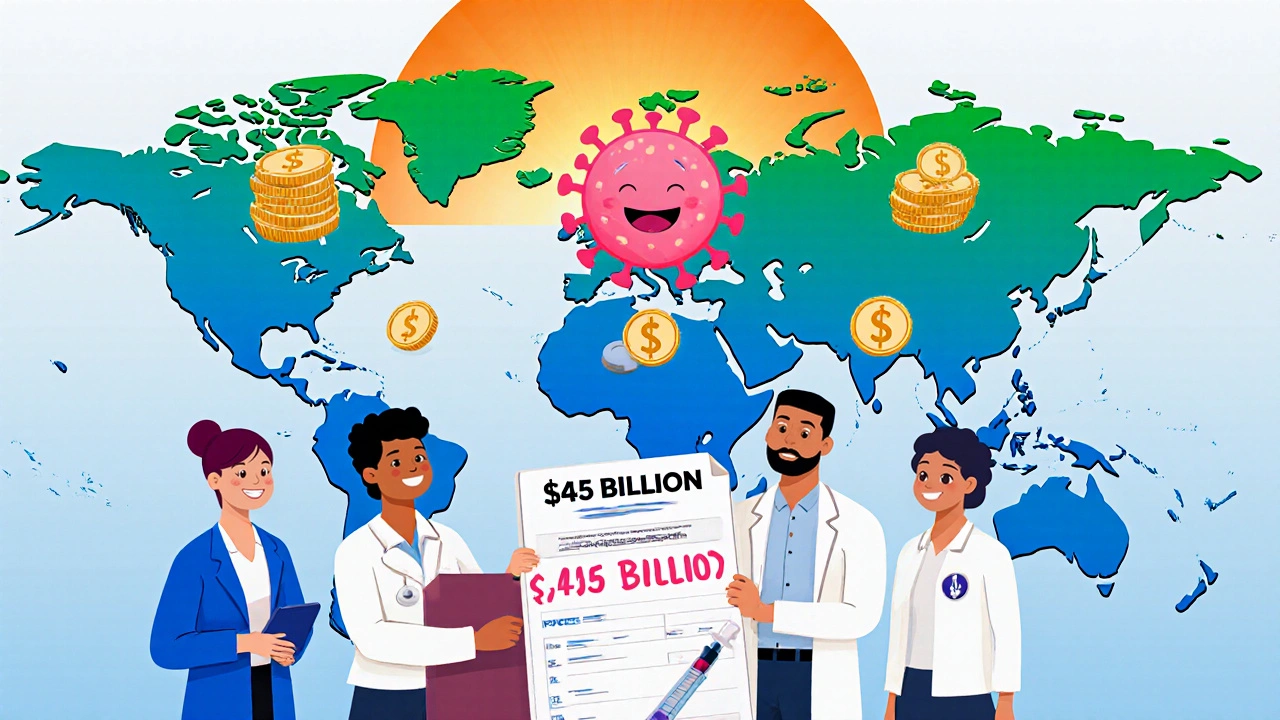
Hepatitis C Cost Calculator
Regional Cost Analysis Tool
Estimate direct medical costs, indirect costs, and total economic burden of Hepatitis C treatment for different regions.
When governments and health insurers tally their yearly budgets, Hepatitis C is a disease that sneaks a hefty price tag into the total. The virus not only strains liver health; it drags billions in direct treatment bills, lost work days, and long‑term complications. Understanding the global hepatitis C costs helps policymakers decide where to invest, which interventions actually pay off, and how close the world is to meeting the World Health Organization’s elimination goal.
Key Takeaways
- In 2023, the worldwide economic burden of Hepatitis C exceeded US$45billion, with direct medical expenses accounting for roughly 60%.
- Direct‑Acting Antivirals (DAAs) cost about US$15‑30k per cure in high‑income countries, but price‑drops in generic markets have cut average treatment costs by up to 70%.
- Indirect costs-lost productivity, disability, and premature death-represent a larger share of the total burden in low‑ and middle‑income regions.
- Regions with comprehensive screening and treatment programs (e.g., Australia, Iceland) see a 30‑40% reduction in long‑term spending within a decade.
- Targeted policy levers such as bulk‑purchase agreements, patent pools, and integrated care pathways can shave billions off the global bill.
Why the Economic Burden Matters
Health economists measure disease impact in two ways: direct costs (medicines, hospital stays, lab tests) and indirect costs (lost work, premature mortality). For Hepatitis C, the two categories intertwine because untreated infection often leads to cirrhosis, hepatocellular carcinoma, and liver transplantation-each with steep price tags.
The World Health Organization (WHO) estimates that in 2022 over 58million people lived with chronic Hepatitis C, and roughly 290000 deaths were linked to the virus. Translating those lives into dollars gives a clearer picture of why every dollar spent on prevention can return multiple savings down the line.
Direct Medical Costs: A Deep Dive
Direct spending includes three main pillars:
- Diagnostic cascade - antibody screening, RNA confirmation, and genotype testing.
- Pharmacotherapy - primarily Direct‑Acting Antivirals (DAAs) such as sofosbuvir/velpatasvir.
- Complication management - hospital admissions for decompensated cirrhosis, liver transplantation, and cancer treatment.
Data from the Institute for Health Metrics and Evaluation (IHME) show that the average per‑patient cost for the full diagnostic‑to‑cure pathway runs US$7k in low‑income settings, US$12k in middle‑income, and US$22k in high‑income countries. The biggest driver is the price of DAAs; a 12‑week regimen can be as low as US$300 in generic‑producing nations or exceed US$30000 where patents dominate.
Complication costs stack up fast: a single liver transplant in the United States averages US$750k, with post‑transplant care adding another US$200k over five years. In Europe, the figure hovers around €400k, while in many low‑resource regions the procedure is rarely performed, leading to higher mortality rather than higher cost.
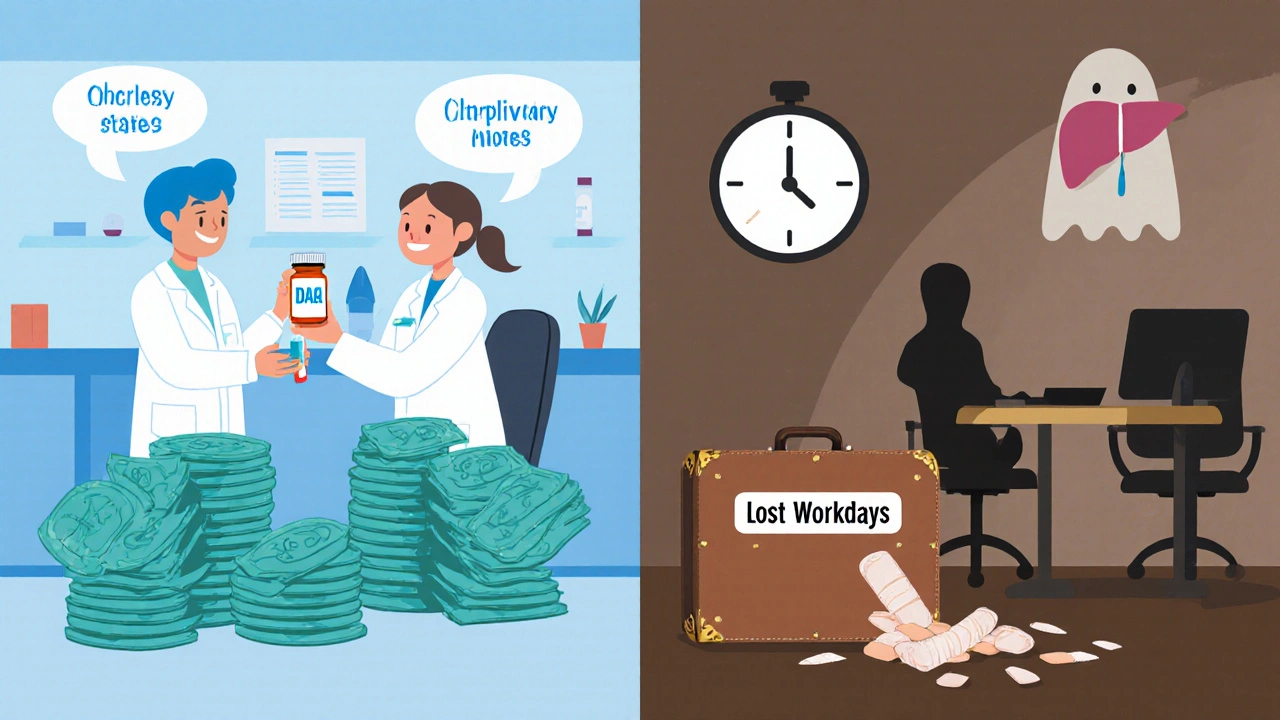
Indirect Costs: The Hidden Toll
While headlines focus on drug prices, the hidden bill from lost workdays and premature death often eclipses direct spending, especially in countries where wages are lower but disease prevalence is high.
Using the DALY (Disability‑Adjusted Life Year) metric, the WHO calculated that each chronic Hepatitis C case accounts for roughly 0.9DALYs lost per year in the absence of treatment. Converting DALYs to economic terms via the human capital approach yields an average indirect cost of US$2k per patient annually in middle‑income economies and US$5k in high‑income settings.
Aggregated across the global infected pool, indirect costs contributed about US$18billion in 2023-roughly 40% of the total economic burden.
Regional Cost Variations
| Region | Direct Medical Cost (US$) | Indirect Cost (US$) | Total Cost (US$) |
|---|---|---|---|
| North America | 22,500 | 9,200 | 31,700 |
| Europe | 19,800 | 7,500 | 27,300 |
| Asia‑Pacific | 12,400 | 5,600 | 18,000 |
| Africa | 6,800 | 4,200 | 11,000 |
| Latin America | 9,900 | 4,900 | 14,800 |
These numbers illustrate why high‑income nations bear the biggest dollar amounts but why low‑ and middle‑income countries feel a larger proportionate strain. In Africa, a single untreated case can represent almost 15% of a household’s annual income.
How Direct‑Acting Antivirals Shift the Balance
Since the first DAAs entered the market in 2014, cure rates jumped above 95% with a 12‑week regimen. The drug class is also the primary lever for cost reduction: generic manufacturers in India, Egypt, and Bangladesh have driven average treatment prices down to US$300‑500 per course, a 90% discount from original patent prices.
Studies from the Global Hepatitis Policy Consortium show that each dollar spent on a DAA cure saves between US$2k and US$7k in avoided complications over a 20‑year horizon. The break‑even point is typically reached within two years of widespread treatment rollout, especially when combined with early diagnosis.
However, price gaps remain. In the United States, average wholesale price for a 12‑week DAA pack stayed above US$25k in 2024, prompting insurers to impose strict eligibility criteria that delay treatment and inflate indirect costs.

Policy Levers That Can Trim the Bill
Governments have several tools to lower the economic burden:
- Negotiated pricing: bulk‑purchase agreements, as used by the Australian government, cut DAA prices by 40%.
- Patent pools: the Medicines Patent Pool (MPP) enables generic producers to license patented DAAs for low‑income markets, expanding access.
- Screen‑and‑treat pathways: integrating point‑of‑care RNA testing in primary clinics reduces the diagnostic cascade cost by 25%.
- Task‑shifting: training community health workers to manage treatment adherence lowers overhead.
- Health‑technology assessment (HTA): evidence‑based reimbursement decisions ensure that only cost‑effective regimens are funded.
Countries that have adopted at least three of these levers report a 30‑50% decline in total Hepatitis C spending within five years.
Future Outlook: 2025‑2035
Looking ahead, three trends will shape the economic picture:
- Universal testing: WHO’s 2025 target aims for 80% of at‑risk adults screened. Achieving this could slash the undiagnosed pool by half.
- Pan‑genotypic DAAs: newer drugs effective against all HCV genotypes simplify supply chains and further reduce pricing pressure.
- Digital adherence tools: mobile‑app reminders and tele‑health check‑ins have cut treatment failure rates from 7% to under 3% in pilot programs.
If these advances scale globally, the annual economic burden could drop below US$30billion by 2030, with indirect costs shrinking as cured patients return to work.
Practical Checklist for Decision‑Makers
- Map current HCV prevalence and identify high‑risk groups.
- Audit existing diagnostic and treatment pathways for cost inefficiencies.
- Secure negotiated DAA pricing through regional procurement consortia.
- Implement point‑of‑care RNA testing to reduce loss‑to‑follow‑up.
- Integrate cost‑effectiveness analysis into budget planning via HTA.
- Track real‑world outcomes-cure rates, relapse, productivity gains-to refine financial models.
Frequently Asked Questions
How much does a Hepatitis C cure cost in low‑income countries?
Generic DAAs produced in India or Egypt can be purchased for between US$300 and US$500 per 12‑week course, far below the prices seen in high‑income markets.
What are the biggest indirect costs of Hepatitis C?
Lost productivity from sick days, reduced work capacity due to fatigue, and premature mortality are the main drivers. In 2023 these factors added roughly US$18billion to the global economic burden.
Can early screening actually save money?
Yes. Detecting infection before liver damage occurs avoids expensive hospital stays and transplants. Modeling studies show a screening‑plus‑treatment program pays for itself within 2‑4years via avoided complications.
How do liver transplants factor into Hepatitis C costs?
Transplantation is the most expensive single episode of care, averaging US$750k in the United States. Successful DAA treatment reduces the need for transplants by up to 70% in populations with high cure rates.
What role does the WHO play in reducing economic burden?
The WHO sets global elimination targets, publishes cost‑effectiveness guidelines, and supports patent‑pool negotiations that lower drug prices for low‑ and middle‑income countries.

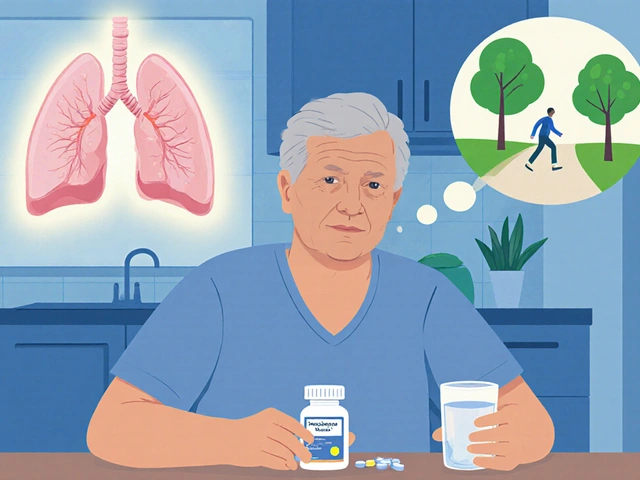
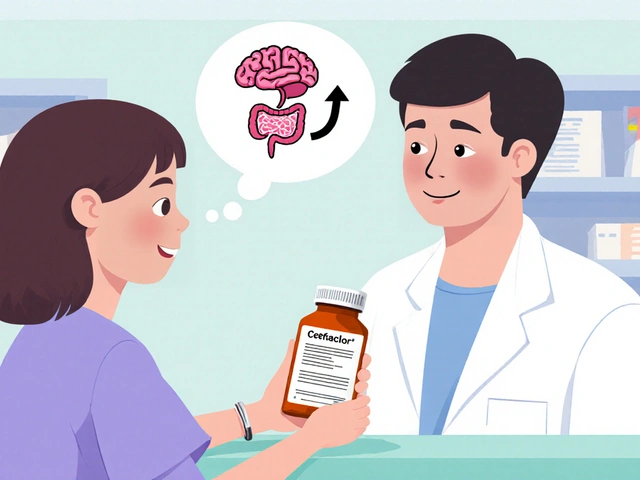
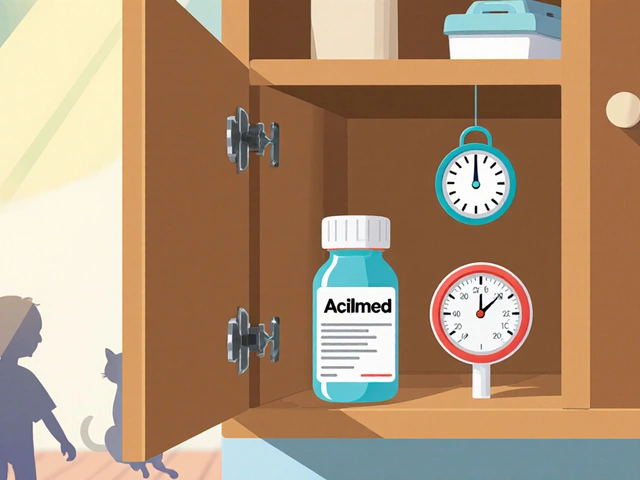
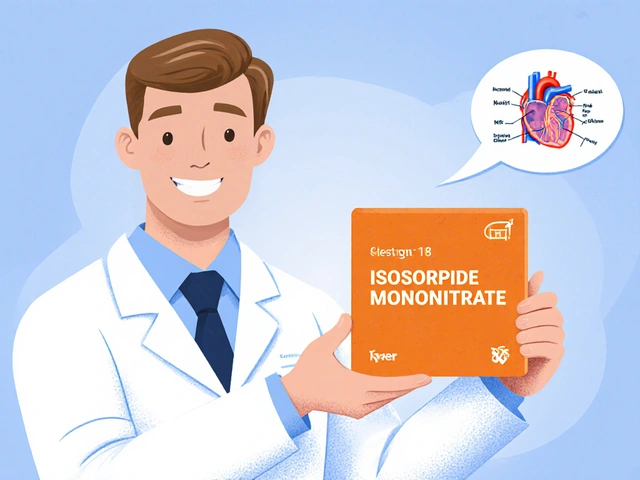
There are 11 Comments
Nitin Chauhan
Investing now saves billions later.
Dannii Willis
The data you’ve compiled offers a clear picture of the fiscal strain Hepatitis C places on health systems.
It’s reassuring to see the emphasis on both direct and indirect costs, as those often get overlooked.
I appreciate the practical checklist for decision‑makers; it bridges analysis and action nicely.
Overall, a well‑structured overview that balances rigor with accessibility.
Robyn Du Plooy
From an epidemiological economics standpoint, the cost‑effectiveness frontier shifts dramatically once DAAs are commodified.
The incremental cost‑utility ratio (ICUR) drops below $500 per quality‑adjusted life year in generic markets, which is a compelling figure for health technology assessment bodies.
Moreover, the macro‑level productivity gains translate into a substantial net present value when modeled over a 20‑year horizon.
Your inclusion of DALY metrics aligns with WHO standards, facilitating cross‑regional comparability.
The stratified regional table underscores the heterogeneity in per‑patient expenditure, reinforcing the case for differentiated pricing strategies.
Notably, the indirect cost component, driven by human capital depreciation, outweighs direct medical spend in low‑income settings.
This underscores the imperative for early detection pathways to curb workforce attrition.
Finally, integrating digital adherence platforms could further compress the economic burden by reducing relapse rates.
Boyd Mardis
High‑price DAAs are a financial firestorm, but the cure is a silver bullet for economies.
Deploy them aggressively and watch the cost avalanche reverse.
Zach Yeager
Some say high fees are inevitable it’s just the market doing its thing.
Desiree Tan
Team, the numbers speak loud-every dollar channeled into universal screening punches a hole in the $45 billion burden.
Push your policymakers to adopt bulk‑purchase agreements; they shave 40 % off drug prices instantly.
Encourage health ministries to embed point‑of‑care RNA testing; the diagnostic cascade cost drops by a quarter.
Track the cure rates rigorously and celebrate hits above 95 %; that data fuels further investment.
Keep the momentum, because the stakes are nothing short of national productivity.
Andrea Dunn
Don’t be fooled by official stats-they often hide the real profit motives behind the scenes 😒
Erin Johnson
Oh, what a surprise, another health crisis that conveniently comes with a price tag the size of a small country's GDP.
The Global Hepatitis Policy Consortium must be thrilled to see another spreadsheet of numbers that nobody reads.
Meanwhile, patients are left waiting while insurers debate eligibility criteria as if they're auditioning for a reality show.
It’s truly heart‑warming to watch governments negotiate bulk‑purchase agreements that shave 40 % off drugs, yet still claim they’re doing enough.
One would think that eliminating a virus that costs billions would be a top priority, but apparently, budget committees love their spreadsheets more.
The indirect costs, those pesky productivity losses, are neatly tucked away in a footnote that never sees the press.
When a cure can prevent $7 000 in future complications per patient, the math is practically begging for immediate action.
However, the narrative remains that high‑priced DAAs are a burden, ignoring the fact that early treatment is a fiscal windfall.
The data you presented on regional cost variations is a masterpiece of clarity-if you enjoy color‑coded tables.
In North America, the $22 500 per patient figure could fund a small startup, yet we linger over patent debates.
Europe’s $19 800 isn’t much different, and still the conversation circles around cost‑effectiveness thresholds.
Asia‑Pacific’s lower numbers should inspire optimism, but they’re often dismissed as ‘developing world’ statistics.
Africa’s $6 800 per patient might look modest, but for a continent where a single salary can exceed that, the impact is monumental.
All of this could be resolved with political will, a dash of compassion, and a sprinkle of common sense.
So, until someone decides the world’s health budget should be a joke, we’ll keep tallying billions and hoping for miracles.
Rica J
Yo, that cost calculator is ace, love how you can just plug numbers and see the impact.
The table is super helpful, even if I had to squint at the tiny fonts.
Keep up the good work, mate!
Linda Stephenson
It’s fascinating how the indirect cost component can outrun direct medical spend in low‑income regions.
The shift toward generic DAAs really changes the cost‑benefit landscape.
I think this approach could serve as a model for tackling other chronic infections.
Sunthar Sinnathamby
Your enthusiasm for early screening is spot on-let’s rally the community and push for nationwide rollout.
Holding back resources any longer is simply unacceptable.
Write a comment
Your email address will not be published. Required fields are marked *